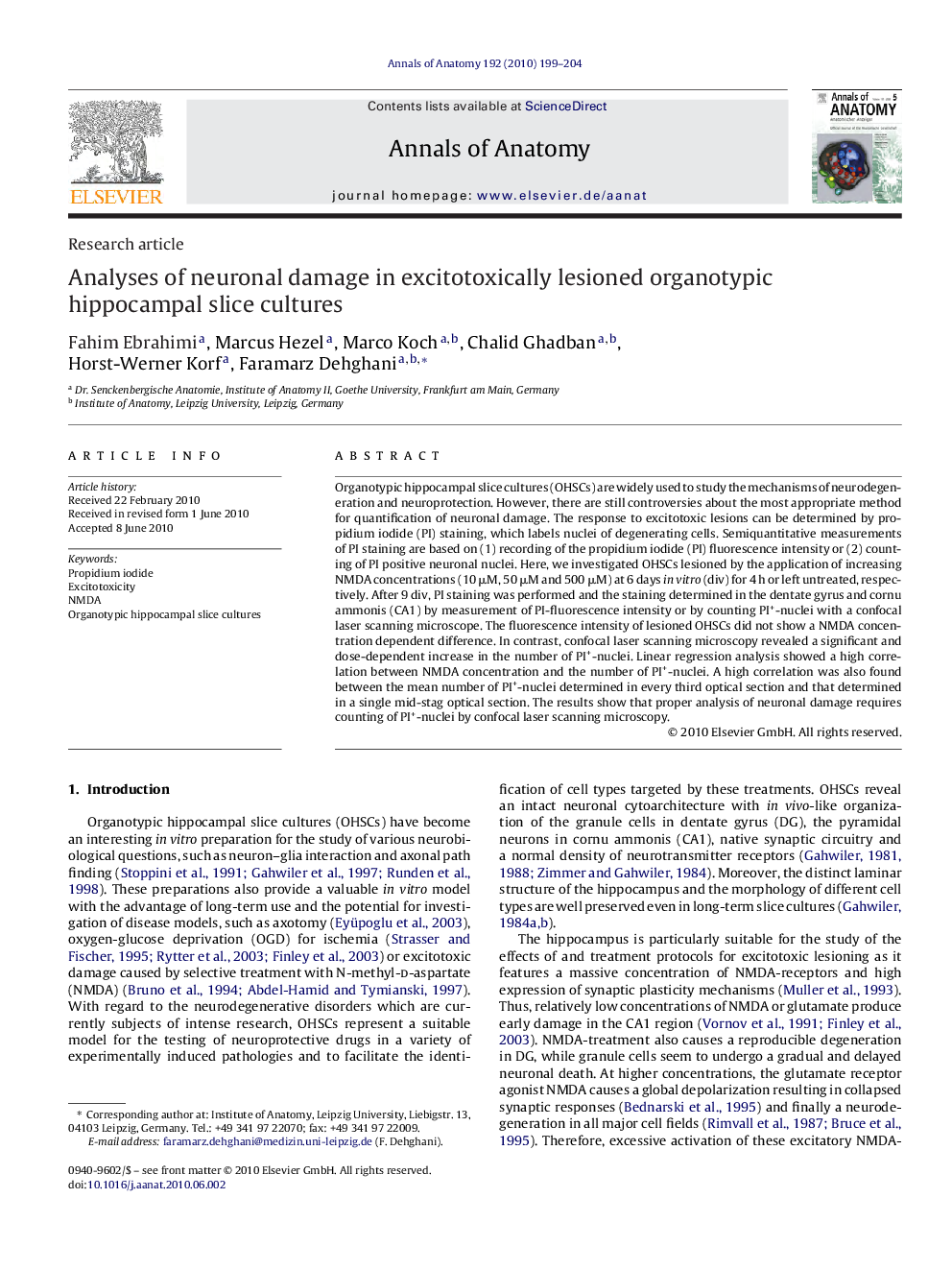| Article ID | Journal | Published Year | Pages | File Type |
|---|---|---|---|---|
| 8462220 | Annals of Anatomy - Anatomischer Anzeiger | 2010 | 6 Pages |
Abstract
Organotypic hippocampal slice cultures (OHSCs) are widely used to study the mechanisms of neurodegeneration and neuroprotection. However, there are still controversies about the most appropriate method for quantification of neuronal damage. The response to excitotoxic lesions can be determined by propidium iodide (PI) staining, which labels nuclei of degenerating cells. Semiquantitative measurements of PI staining are based on (1) recording of the propidium iodide (PI) fluorescence intensity or (2) counting of PI positive neuronal nuclei. Here, we investigated OHSCs lesioned by the application of increasing NMDA concentrations (10 μM, 50 μM and 500 μM) at 6 days in vitro (div) for 4 h or left untreated, respectively. After 9 div, PI staining was performed and the staining determined in the dentate gyrus and cornu ammonis (CA1) by measurement of PI-fluorescence intensity or by counting PI+-nuclei with a confocal laser scanning microscope. The fluorescence intensity of lesioned OHSCs did not show a NMDA concentration dependent difference. In contrast, confocal laser scanning microscopy revealed a significant and dose-dependent increase in the number of PI+-nuclei. Linear regression analysis showed a high correlation between NMDA concentration and the number of PI+-nuclei. A high correlation was also found between the mean number of PI+-nuclei determined in every third optical section and that determined in a single mid-stag optical section. The results show that proper analysis of neuronal damage requires counting of PI+-nuclei by confocal laser scanning microscopy.
Related Topics
Life Sciences
Biochemistry, Genetics and Molecular Biology
Cell Biology
Authors
Fahim Ebrahimi, Marcus Hezel, Marco Koch, Chalid Ghadban, Horst-Werner Korf, Faramarz Dehghani,
